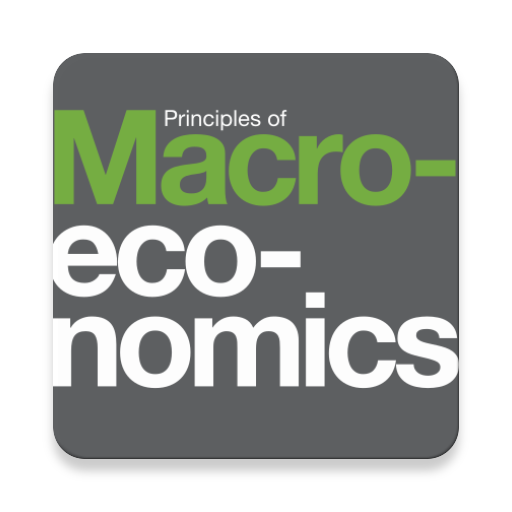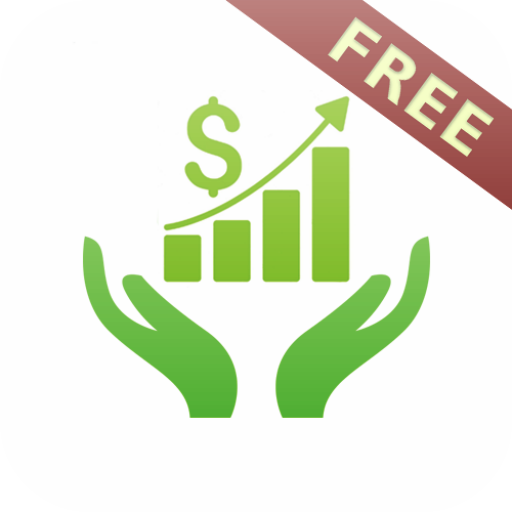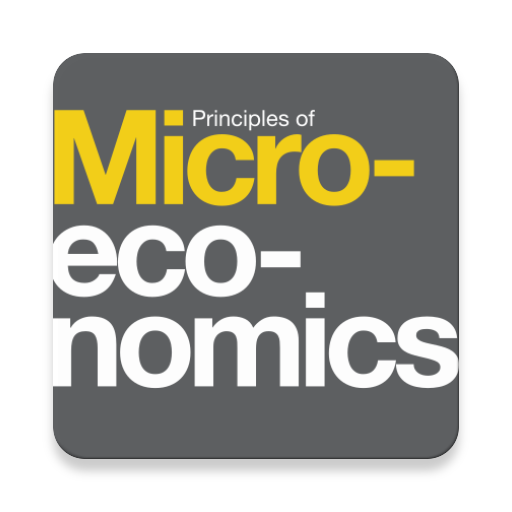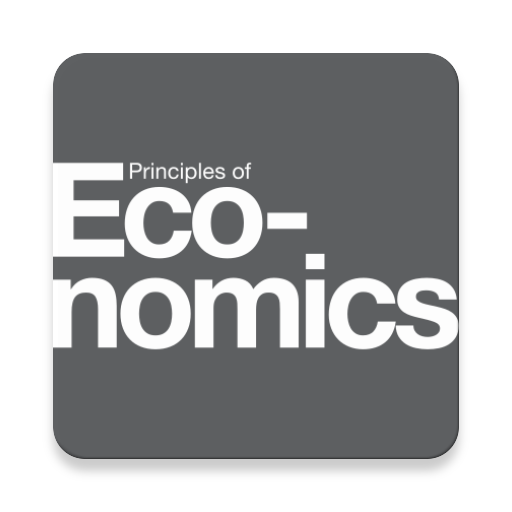

Principles of Macroeconomics Textbook & Test Bank
Educational | QuizOver.com
在電腦上使用BlueStacks –受到5億以上的遊戲玩家所信任的Android遊戲平台。
Play Principles of Macroeconomics Textbook & Test Bank on PC
Principles of Macroeconomics covers the scope and sequence requirements of most introductory macroeconomics courses.
The text also includes many current examples, which are handled in a politically equitable way.
The outcome is a balanced approach to both Keynesian and classical views, and to the theory and application of economics concepts.
* Complete Textbook by OpenStax
* Multiple Choices Questions (MCQ)
* Essay Questions Flash Cards
* Key-Terms Flash Cards
Powered by QuizOver.com the leading online quiz creator
https://www.quizover.com
1. Welcome to Economics!
1.1. What Economics Is and Why It's Important
1.2. Microeconomics and Macroeconomics
1.3. How Economists Use Theories and Models to Understand Economic Issues
1.4. How Economies Can Be Organized: An Overview of Economic Systems
2. Choice in a World of Scarcity
2.1. How Individuals Make Choices Based on Their Budget Constraint
2.2. The Production Possibilities Frontier and Social Choices
2.3. Confronting Objections to the Economic Approach
3. Demand and Supply
3.1. Demand, Supply, and Equilibrium in Markets for Goods and Services
3.2. Shifts in Demand and Supply for Goods and Services
3.3. Changes in Equilibrium Price and Quantity: The Four-Step Process
3.4. Price Ceilings and Price Floors
3.5. Demand, Supply, and Efficiency
4. Labor and Financial Markets
4.1. Demand and Supply at Work in Labor Markets
4.2. Demand and Supply in Financial Markets
4.3. The Market System as an Efficient Mechanism for Information
5. Elasticity
5.1. Price Elasticity of Demand and Price Elasticity of Supply
5.2. Polar Cases of Elasticity and Constant Elasticity
5.3. Elasticity and Pricing
5.4. Elasticity in Areas Other Than Price
6. The Macroeconomic Perspective
6.1. Measuring the Size of the Economy: Gross Domestic Product
6.2. Adjusting Nominal Values to Real Values
6.3. Tracking Real GDP over Time
6.4. Comparing GDP among Countries
6.5. How Well GDP Measures the Well-Being of Society
7. Economic Growth
7.1. The Relatively Recent Arrival of Economic Growth
7.2. Labor Productivity and Economic Growth
7.3. Components of Economic Growth
7.4. Economic Convergence
8. Unemployment
8.1. How the Unemployment Rate is Defined and Computed
8.2. Patterns of Unemployment
8.3. What Causes Changes in Unemployment over the Short Run
8.4. What Causes Changes in Unemployment over the Long Run
9. Inflation
9.1. Tracking Inflation
9.2. How Changes in the Cost of Living are Measured
9.3. How the U.S. and Other Countries Experience Inflation
9.4. The Confusion Over Inflation
9.5. Indexing and Its Limitations
10. The International Trade and Capital Flows
10.1. Measuring Trade Balances
10.2. Trade Balances in Historical and International Context
10.3. Trade Balances and Flows of Financial Capital
10.4. The National Saving and Investment Identity
10.5. The Pros and Cons of Trade Deficits and Surpluses
10.6. The Difference between Level of Trade and the Trade Balance
11. The Aggregate Demand/Aggregate Supply Model
11.1. Macroeconomic Perspectives on Demand and Supply
11.2. Building a Model of Aggregate Demand and Aggregate Supply
11.3. Shifts in Aggregate Supply
11.4. Shifts in Aggregate Demand
11.5. How the AD/AS Model Incorporates Growth, Unemployment, and Inflation
11.6. Keynes’ Law and Say’s Law in the AD/AS Model
12. The Keynesian Perspective
13. The Neoclassical Perspective
14. Money and Banking
15. Monetary Policy and Bank Regulation
16. Exchange Rates and International Capital Flows
17. Government Budgets and Fiscal Policy
18. The Impacts of Government Borrowing
19. Macroeconomic Policy Around the World
20. International Trade
21. Globalization and Protectionism
The text also includes many current examples, which are handled in a politically equitable way.
The outcome is a balanced approach to both Keynesian and classical views, and to the theory and application of economics concepts.
* Complete Textbook by OpenStax
* Multiple Choices Questions (MCQ)
* Essay Questions Flash Cards
* Key-Terms Flash Cards
Powered by QuizOver.com the leading online quiz creator
https://www.quizover.com
1. Welcome to Economics!
1.1. What Economics Is and Why It's Important
1.2. Microeconomics and Macroeconomics
1.3. How Economists Use Theories and Models to Understand Economic Issues
1.4. How Economies Can Be Organized: An Overview of Economic Systems
2. Choice in a World of Scarcity
2.1. How Individuals Make Choices Based on Their Budget Constraint
2.2. The Production Possibilities Frontier and Social Choices
2.3. Confronting Objections to the Economic Approach
3. Demand and Supply
3.1. Demand, Supply, and Equilibrium in Markets for Goods and Services
3.2. Shifts in Demand and Supply for Goods and Services
3.3. Changes in Equilibrium Price and Quantity: The Four-Step Process
3.4. Price Ceilings and Price Floors
3.5. Demand, Supply, and Efficiency
4. Labor and Financial Markets
4.1. Demand and Supply at Work in Labor Markets
4.2. Demand and Supply in Financial Markets
4.3. The Market System as an Efficient Mechanism for Information
5. Elasticity
5.1. Price Elasticity of Demand and Price Elasticity of Supply
5.2. Polar Cases of Elasticity and Constant Elasticity
5.3. Elasticity and Pricing
5.4. Elasticity in Areas Other Than Price
6. The Macroeconomic Perspective
6.1. Measuring the Size of the Economy: Gross Domestic Product
6.2. Adjusting Nominal Values to Real Values
6.3. Tracking Real GDP over Time
6.4. Comparing GDP among Countries
6.5. How Well GDP Measures the Well-Being of Society
7. Economic Growth
7.1. The Relatively Recent Arrival of Economic Growth
7.2. Labor Productivity and Economic Growth
7.3. Components of Economic Growth
7.4. Economic Convergence
8. Unemployment
8.1. How the Unemployment Rate is Defined and Computed
8.2. Patterns of Unemployment
8.3. What Causes Changes in Unemployment over the Short Run
8.4. What Causes Changes in Unemployment over the Long Run
9. Inflation
9.1. Tracking Inflation
9.2. How Changes in the Cost of Living are Measured
9.3. How the U.S. and Other Countries Experience Inflation
9.4. The Confusion Over Inflation
9.5. Indexing and Its Limitations
10. The International Trade and Capital Flows
10.1. Measuring Trade Balances
10.2. Trade Balances in Historical and International Context
10.3. Trade Balances and Flows of Financial Capital
10.4. The National Saving and Investment Identity
10.5. The Pros and Cons of Trade Deficits and Surpluses
10.6. The Difference between Level of Trade and the Trade Balance
11. The Aggregate Demand/Aggregate Supply Model
11.1. Macroeconomic Perspectives on Demand and Supply
11.2. Building a Model of Aggregate Demand and Aggregate Supply
11.3. Shifts in Aggregate Supply
11.4. Shifts in Aggregate Demand
11.5. How the AD/AS Model Incorporates Growth, Unemployment, and Inflation
11.6. Keynes’ Law and Say’s Law in the AD/AS Model
12. The Keynesian Perspective
13. The Neoclassical Perspective
14. Money and Banking
15. Monetary Policy and Bank Regulation
16. Exchange Rates and International Capital Flows
17. Government Budgets and Fiscal Policy
18. The Impacts of Government Borrowing
19. Macroeconomic Policy Around the World
20. International Trade
21. Globalization and Protectionism
在電腦上遊玩Principles of Macroeconomics Textbook & Test Bank . 輕易上手.
-
在您的電腦上下載並安裝BlueStacks
-
完成Google登入後即可訪問Play商店,或等你需要訪問Play商店十再登入
-
在右上角的搜索欄中尋找 Principles of Macroeconomics Textbook & Test Bank
-
點擊以從搜索結果中安裝 Principles of Macroeconomics Textbook & Test Bank
-
完成Google登入(如果您跳過了步驟2),以安裝 Principles of Macroeconomics Textbook & Test Bank
-
在首頁畫面中點擊 Principles of Macroeconomics Textbook & Test Bank 圖標來啟動遊戲




